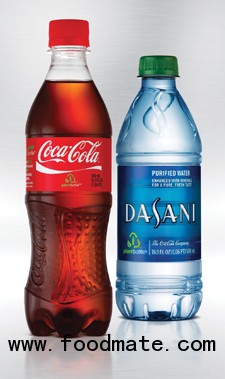
The Coca-Cola Co. has continued to move forward in its efforts to create a commercially viable 100 percent plant-based bottle that would meet its quality and recyclability standards.
It has already done so with its first-generation PlantBottle, a fully-recyclable PET bottle composed of 30 percent plant material. But the 100-percent plant-based bottle, or PlantBottle 2.0, if you will, is still several years away from being produced on a commercial scale, as a drop-in replacement to the petroleum-based PET bottles on the market today.
“We think (it will happen) in the next few years,” says Scott Vitters, Coke’s general manager, PlantBottle packaging platform. “Our technology partners have focused on around 2016 or 17. And we’ve really depended upon them in terms of when they think they can have a commercial technology that can be introduced into the marketplace. But what we have not done until we have in place that commercial technology is set any commitments of when we would be replacing all of our PET toward that goal.”
In the meantime, Coca-Cola is steadily laying the groundwork to make 100-percent plant-based PET a commercial reality. On the research front, it entered into a partnership last December with the three biotechnology companies Vitters alluded to above: Virent, Gevo and Avantium. Vitters stresses this is not a competition, but a collaboration. It is possible the three companies may each develop different, viable solutions and Coke could end up using all three of them.
And then this past June, Coke, Ford Motor Co., H.J. Heinz Company, NIKE, Inc. and Procter & Gamble announced the formation of the Plant PET Technology Collaborative (PTC), a strategic working group focused on accelerating the development and use of 100 percent plant-based PET materials and fiber in their products. The PTC expands upon an earlier collaborative effort Coke announced just with Heinz during the summer of 2011.
The PTC members say they are committed to researching and developing commercial solutions for PET plastic made entirely from plants and will aim to drive the development of common methodologies and standards for the use of plant-based plastic including life cycle analyses and universal terminology.
PepsiCo also has issued its share of updates on its own progress with 100 percent plant-based PET. The company announced in March 2011 that it had developed such a bottle in the lab made from switch grass, pine bark and corn husks. While the company had said it would be piloting production of the new bottle this year, a spokesperson reached at press time would only say: “PepsiCo remains focused on packaging innovation, and we continue to advance technologies to determine the full potential of green PET bottles as a cost-effective packaging solution in our portfolio.”
The advantages of a commercial- scale drop-in plant-based PET bottle for either company would be many. For one thing, they would replace the expensive and dwindling petroleum ingredient with widely available plant-based ones. With prices of petroleum unstable at best, this could remove an increasing financial burden for Coke and Pepsi.
Another advantage, at least in PepsiCo’s case, would be the creation of a closed-loop system where waste generated by its snack food business could potentially be turned into bottles.
Research also indicates that from the growing of the plant materials through to the production of the resin, the carbon footprint for Coke’s PlantBottle packaging is smaller than for bottles made with traditional PET.
While research into the 100 percent plant-based bottle continues, Coke moves forward with its first-generation 30 percent PlantBottles. First launched in November, 2009, more than 10 billion PlantBottles have since been used for brands like Dasani and Coca-Cola in 24 countries. That is between 8 and 10 percent of Coke’s total global PET volume. “And we are moving very fast with expanding this program,” says Vitters.
The PlantBottle is made partly from industrial sugar cane from Brazil and molasses. “As we are growing this program, we’ve been clear that we don’t believe our current sources are going to meet our needs globally and the needs of converting the entire industry,” says Vitters. As a result, Coke is exploring cellulosics or plant waste materials, looking into using bio materials like corn stalks, rice hulls or barks. “It is likely we will start to use some cellulosic material as soon as even this year,” he says. Coke also has partnered with the World Wildlife Fund to create the Bioplastics Feedstock Alliance, focused on coming up with guiding principles for ensuring that plant materials that are selected for plastics deliver improved performance.
Just a day before this issue went to press, Coke also announced a partnership with JBF Industries Ltd. to further expand production of the plant-based material used in its PlantBottle packaging. JBF Industries Ltd. will build the world’s largest facility to produce bio-glycol, the key ingredient used to make PlantBottle packaging. The facility, which will be located in Araraquara, Sao Paulo, Brazil, will produce the ingredient using locally sourced sugarcane and sugarcane processing waste. Construction is expected to begin at the end of this year and last for 24 months. At full capacity, it is estimated the facility will produce 500,000 metric tons of material per year.
Vitters explains that the PlantBottle was a major breakthrough in that Coke invented plant-based pathways to replace the existing ingredients in PET. “So we are producing chemically the exact same PET, but instead of coming from old carbon, derived from dinosaurs and plants from billions of years ago, it’s coming from new carbon sources.”
By 2020, Coke hopes to convert all of its PET to PlantBottle technology.





